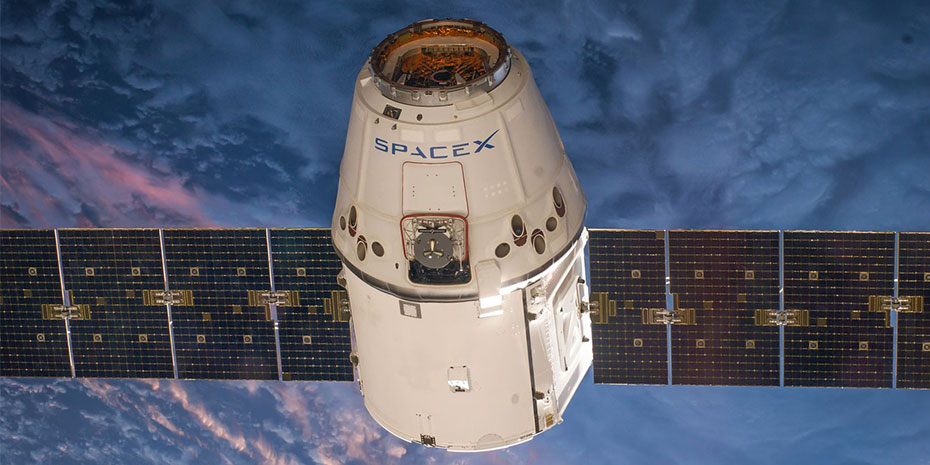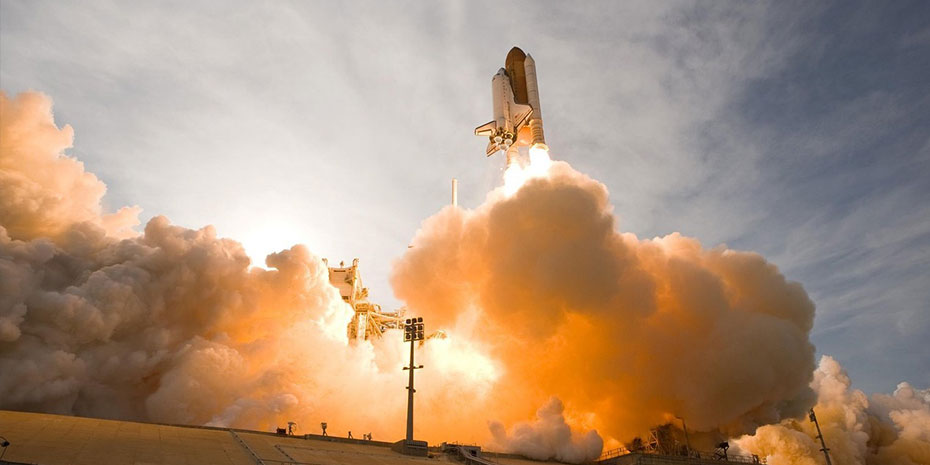
The night sky in March is an exciting time for stargazers, as we approach the spring equinox and witness a variety of astronomical events. During this month, the sky grants us beautiful views of rocket launches, comet passes and meteor showers. We’ve compiled a list of nighttime events in March that you cannot miss!
Venus-Jupiter conjunction
On the night of March 1, stargazers will be in for a treat. The two brightest planets in our solar system, Jupiter and Saturn, will reach their closest points to each other in our night sky – an event known as a conjunction. From Earth’s perspective, the two planets will appear close together; however, they are actually hundreds of millions of miles apart.
From dusk until around midnight local time, you should be able to see both planets in the same field of view with just your eyes or even a small backyard telescope. Located to the west-southwest of the horizon, they will look like two bright stars side by side. For some areas of the world, the conjunction may even appear as one large point of light.
This special event occurs fairly frequently due to planetary motion and has no profound astronomical significance; however it is still beautiful to behold! NASA encourages everyone to take this opportunity to go out and observe this amazing sight first hand – if you can avoid cloudy weather conditions!

Launch of SpaceX’s OneWeb 17
SpaceX is launching an exciting new satellite into orbit! On March 1, at 2:44 pm EST, SpaceX will launch OneWeb 17 from the Cape Canaveral Space Force Station in Florida. This satellite is part of the OneWeb constellation and will help provide global Internet broadband service for individual consumers.
OneWeb 17 will be a microsatellite, around 150 kg in size, that operates on Ku-band from low Earth orbit. The OneWeb constellation will consist of a total of 648 satellites (60 spares) to provide broadband coverage across the world.
This launch marks yet another milestone for SpaceX as it continues its mission to make space exploration more accessible and affordable. With this launch, SpaceX is demonstrating its commitment to revolutionizing space technology and taking us one step closer to being able to access high-speed internet worldwide!
Daylight Savings Time
March 13 marks a special day, as the clocks are turned back an hour signaling the return of Daylight Savings Time. At 2:00 AM, many individuals will roll out of bed to reset their clocks and enjoy an extra hour of sleep. While some may find this practice strange, it has been around for centuries and is still used in many countries today.
In 1784, Benjamin Franklin first proposed the idea to conserve energy by shifting daylight hours around during different seasons. Franklin wanted people to take advantage of the natural light available during summer months rather than wasting energy on candles and lamps at night. It wasn’t until World War I that Daylight Savings Time was actually adopted by many countries in order to conserve resources for the war effort.
Nowadays, most states in the US observe Daylight Saving Time with a few exceptions such as Arizona, Hawaii and parts of Indiana who do not participate in this practice. Many other countries throughout the world also use Daylight Saving Time including Canada, Mexico, Europe and Australia. During Spring when we turn our clocks forward one hour we are gaining sunlight from sunrise which is called “springing forward” while during Fall when we set our clocks back one hour we are losing sunlight from sunset which is called “falling back”.
The γ-Normid Meteor Shower
Meteor showers are caused by streams of debris left behind by comets and asteroids as they travel through our solar system. Over long periods of time, these pieces of debris spread out along the orbit of the parent object before eventually colliding with Earth’s atmosphere when it passes through them. As these small pieces enter Earth’s atmosphere at high speeds, they create dazzling streaks of light that we see as shooting stars.
The γ-Normid meteor shower is an annual celestial phenomenon that will be occurring from February 25 to March 28, with its peak rate of meteors expected to occur around March 15. During this period, observers in areas where the radiant point – located in the constellation Norma – is visible above the horizon have a chance of seeing these meteors streaking across the night sky.

Spring Equinox
The Spring Equinox on March 20 marks the changing of seasons in both the northern and southern hemispheres, where winter ends and spring begins in the north, and summer ends and autumn begins in the south. This event has long been celebrated by people around the world who embrace its symbolic power and beauty.
Astronomically speaking, the Equinox occurs when the sun is exactly above the Earth’s equator at a specific point during its orbit. This causes day and night everywhere on Earth to have almost precisely 12 hours each. This balance between light and darkness is due to the distance between Earth and Sun as well as the planet’s 23.5° tilt on its axis, which ensures that neither hemisphere receives more sunlight than the other.
The significance of this celestial alignment extends beyond being simply an indicator of seasonal change. The March Equinox serves as a reminder of our place in nature, a meaningful moment to recognize our connection with all living things on our planet—from delicate flowers blooming to animal migration—and appreciate how it operates according to perfect harmony.
In March, there are many fascinating events taking place in the night sky. From witnessing some of the most impressive meteor showers to marveling at a glorious supermoon, this month offers plenty of celestial fun and entertainment. Additionally, be sure to check out the stunning constellations that will fill the skies this month, as well as the full worm moon and total solar eclipse. With so much to observe and explore, March is an ideal time to get outside and take in all of the wonders of our universe.
Sources Referenced:
Dobrijevic, D. (2023, February 12). Space calendar 2023: Rocket Launches, skywatching events, Missions & More! Space.com. Retrieved February 25, 2023, from https://www.space.com/32286-space-calendar.html
Ford, D. (n.d.). γ-Normid meteor shower 2023. In the Sky. Retrieved February 25, 2023, from https://in-the-sky.org/news.php?id=20230315_10_100#:~:text=%CE%B3%2D Normid%20meteor%20shower%202023,In%2D The%2DSky.org& text=The%20%CE%B3%2DNormid%20meteor%20shower,of%20meteors%20around%2015%20March.
March’s Night Sky Guide (March 2022). Farmers’ Almanac – Plan Your Day. Grow Your Life. (2022, November 30). Retrieved February 25, 2023, from https://www.farmersalmanac.com/marchs-night-sky-guide-march-2022
Osborne, M. (2023, January 30). Ten dazzling celestial events to see in 2023. Smithsonian.com. Retrieved February 25, 2023, from https://www.smithsonianmag.com/science-nature/ten-dazzling-celestial-events-to-see-in-2023-180981529/
PSLV – GSLV Mk III: Oneweb 18 rocket launch. Space Launch Schedule. (2023, February 24). Retrieved February 25, 2023, from https://www.spacelaunchschedule.com/launch/gslv-mk-iii-oneweb-18/
Stimac, V. (2023, February 20). 10 must-see astronomy events in the March Night Sky (2023, February 20). Space Tourism Guide. Retrieved February 25, 2023, from https://spacetourismguide.com/march-night-sky/
With March just around the corner, stargazers are in for a treat! This month will feature an awe-inspiring lineup of celestial events that you won’t want to miss. On March 1, the planets Venus and Jupiter will form a rare conjunction, appearing so close together they may look like a single star. Make sure to observe the event at dusk to get the best view!
Also worth looking up in the night sky this spring is the γ-Normid Meteor Shower on March 15 – its annual peak provides spectacular views of fireballs streaking across the sky. So make sure you grab your telescope and head outside – with all these amazing celestial events happening in March, you won’t want to miss it. Read our article “LOOK UP! What To See in March” for more details and information about each event!
Link: #nightskysights #march #stars #equinox
IG
As winter ends and the days get longer, what could be more fitting than to look up at the night sky? This March, we are blessed with many celestial wonders to observe – from a mesmerizing conjunction of Venus and Jupiter, to the γ-Normid Meteor Shower, and the Spring Equinox. Don’t miss out on these spectacular shows in the night sky – learn more about them in our article “LOOK UP! What To See in March” on our website.
Link: #nightskysights #march #stars #equinox
This March, the night sky offers many awe-inspiring celestial events. On March 1, Venus and Jupiter will align in a rare conjunction, visible from Earth. Don’t forget about the γ-Normid Meteor Shower at its peak on March 15 either! So look up this month — with so much to see in the night sky, you won’t want to miss out!
Link: #nightskysights #march #stars #equinox
Keep your eyes to the night sky this March! Witness two planets in close conjunction, the γ-Normid Meteor Shower, and SpaceX’s historic launch of OneWeb 17. Check out our article for more details: “LOOK UP! What To See in March.”
Link: #nightskysights #march #stars #equinox





